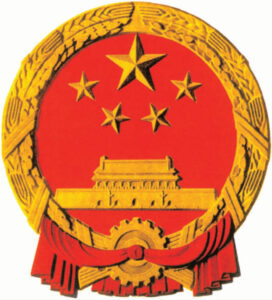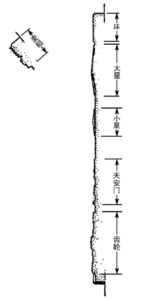Presidential Decree of the People’s Republic of China No. 60: Decision of the Standing Committee of the National People’s Congress of the People’s Republic of China on Amending the Law of the People’s Republic of China on the National Emblem (2020 Revision)
Promulgated by the 22nd Meeting of the Standing Committee of the 13th National People’s Congress of the People’s Republic of China on October 17, 2020, effective from January 1, 2021.
President of the People’s Republic of China: Xi Jinping
October 17, 2020
Law of the People’s Republic of China on the National Emblem
(Passed at the 18th Meeting of the Standing Committee of the 7th National People’s Congress of the People’s Republic of China on March 2, 1991. First amended according to the Decision on Amending Some Laws passed at the 10th Meeting of the 11th National People’s Congress of the People’s Republic of China on August 27, 2009. Second amended according to the Decision of the Standing Committee of the 13th National People’s Congress of the People’s Republic of China on Amending the Law of the People’s Republic of China on the National Emblem passed at the 22nd Meeting on October 17, 2020.)
Article 1 In order to uphold the dignity of the national emblem, correctly use the national emblem, enhance the national consciousness of citizens, promote the spirit of patriotism, and cultivate and practice the core socialist values, this Law is formulated in accordance with the Constitution.
Article 2 The national emblem of the People’s Republic of China consists of the Tian’anmen Gate under the radiance of five stars, surrounded by ears of grain and cogwheels.
The national emblem of the People’s Republic of China is made in accordance with the Pattern of the National Emblem of the People’s Republic of China adopted by the Central People’s Government Committee in 1950 and the Instructions for Making the Pattern of the National Emblem of the People’s Republic of China published by the Office of the Central People’s Government Committee.
Article 3 The national emblem of the People’s Republic of China is the symbol and sign of the People’s Republic of China.
All organizations and citizens shall respect and cherish the national emblem.
Article 4 The following institutions shall display the national emblem:
(1) Standing Committee of the People’s Congress at all levels;
(2) Governments at all levels;
(3) Central Military Commission;
(4) Supervisory commissions at all levels;
(5) People’s courts at all levels and specialized people’s courts;
(6) People’s procuratorates at all levels and specialized people’s procuratorates;
(7) Ministry of Foreign Affairs;
(8) Embassies, consulates, and other diplomatic missions abroad of the state;
(9) Relevant institutions of the Central People’s Government in the Hong Kong Special Administrative Region and the Macao Special Administrative Region.
The national emblem shall be displayed above the main entrance of the institution in the middle.
Article 5 The national emblem shall be displayed at the following places:
(1) Tian’anmen Gate Tower and the Great Hall of the People in Beijing;
(2) Meeting halls of the People’s Congress at or above the county level and their standing committees, as well as the meeting halls of townships, ethnic townships, and towns;
(3) Courtrooms of people’s courts at all levels and specialized people’s courts;
(4) Venues for constitutional oaths;
(5) Appropriate places at entry and exit ports.
Article 6 The seals of the following institutions shall be engraved with the pattern of the national emblem:
(1) Standing Committee of the National People’s Congress, State Council, Central Military Commission, National Supervisory Commission, Supreme People’s Court, and Supreme People’s Procuratorate;
(2) Special committees of the National People’s Congress and the offices, working committees of the Standing Committee of the National People’s Congress, ministries, commissions, and directly affiliated agencies of the State Council, as well as the offices prescribed by the State Council that shall use seals engraved with the pattern of the national emblem, and other institutions specified by the Central Military Commission that shall use seals engraved with the pattern of the national emblem;
(3) Standing committees of people’s congresses at or above the county level, people’s governments, supervisory commissions, people’s courts, people’s procuratorates, specialized people’s courts, and specialized people’s procuratorates;
(4) Embassies, consulates, and other diplomatic missions abroad.
Article 7 The institutions specified in Article 6 of this Law shall prominently display the national emblem on the homepage of their websites.
The standard version of the national emblem used on websites is published on the websites of the National People’s Congress and the Chinese government.
Article 8 The following documents, publications, etc., shall bear the pattern of the national emblem:
(1) Certificates of honor, appointment letters, and diplomatic documents issued by the Standing Committee of the National People’s Congress, the President of the People’s Republic of China, and the State Council;
(2) Envelopes, letterheads, invitations, etc., used by the President, Vice President, Chairman and Vice Chairmen of the Standing Committee of the National People’s Congress, Premier, Vice Premiers, State Councilors, Chairman and Vice Chairmen of the Central Military Commission, Director of the National Supervisory Commission, President of the Supreme People’s Court, and Procurator-General of the Supreme People’s Procuratorate in their official capacities;
(3) Covers of bulletins issued by the Standing Committee of the National People’s Congress, the State Council, the Supreme People’s Court, and the Supreme People’s Procuratorate;
(4) Covers of the formal versions of laws and regulations published by the state.
Article 9 Border markers, boundary markers, markers indicating the location of territorial sea baselines, and other symbols used to indicate national sovereignty may bear the pattern of the national emblem.
The legal tender issued by the People’s Bank of China may bear the pattern of the national emblem.
Article 10 The following certificates and licenses may bear the pattern of the national emblem:
(1) Work permits, law enforcement certificates, etc., of staff of state organs;
(2) Business licenses, permits, certificates of approval, qualification certificates, rights certificates, etc., issued by state organs;
(3) Resident identity cards, passports of the People’s Republic of China, and other legal entry and exit documents.
The emblems of state organs and armed forces may use the pattern of the national emblem as the core pattern.
Citizens may wear national emblem badges on solemn occasions to express patriotic feelings.
Article 11 The methods for foreign affairs activities and the use of the national emblem by foreign embassies, consulates, and other diplomatic missions abroad shall be prescribed by the Ministry of Foreign Affairs and implemented after approval by the State Council.
Article 12 If it is necessary to display or use the national emblem outside the scope prescribed in this Law, the offices of the Standing Committee of the National People’s Congress or the State Council, in conjunction with the relevant competent departments, shall prescribe it.
Article 13 The national emblem and its pattern shall not be used for:
(1) Trademarks, design patents granted, or commercial advertisements;
(2) Daily necessities, daily life arrangements;
(3) Private celebrations or mourning activities;
(4) Other occasions where the State Council Office prescribes that the national emblem and its pattern shall not be used.
Article 14 Damaged, soiled, or non-standard national emblems shall not be displayed.
Article 15 The national emblem shall be an important content of patriotic education.
Primary and secondary schools shall educate students about the history and spiritual connotations of the national emblem.
News media shall actively promote knowledge about the national emblem and guide citizens and organizations in the correct use of the national emblem and its pattern.
Article 16 The national emblem to be displayed shall be uniformly produced by enterprises designated by the state, with the following three common diameters:
(1) One hundred centimeters;
(2) Eighty centimeters;
(3) Sixty centimeters.
If it is necessary to display a national emblem with a non-standard size, it shall be proportionally enlarged or reduced in accordance with the common size and adapted to the purpose of use, the building where it is located, and the surrounding environment.
Article 17 The General Office of the State Council shall coordinate and coordinate national emblem management work nationwide. The Market Supervision and Management Departments at all levels shall supervise and manage the production and sale of national emblems.
Departments designated by the county-level people’s government shall supervise and manage the display, use, and collection of national emblems within their administrative regions.
Article 18 Those who intentionally insult the national emblem of the People’s Republic of China in public places by burning, damaging, defacing, soiling, or trampling shall be criminally liable according to law; those with less serious circumstances shall be detained for up to fifteen days by the public security organs.
Article 19 This Law shall come into force on October 1, 1991.
Attachment:
Instructions for the Production of the National Emblem of the People’s Republic of China
(Announced by the General Office of the Central People’s Government Committee on September 20, 1950)
- Two ears of wheat and rice form a perfect circle. A gear is placed at the intersection of the wheat and rice stalks. The center of the gear is tied with a red ribbon. The ribbon extends left and right, encircling the wheat and rice and hanging down, dividing the gear into upper and lower parts.
- Draw a vertical line from the center of the pattern; the two halves are completely symmetrical.
- The position and size of each part of the pattern can be enlarged or reduced according to the proportion of the grid ink line drawing.
- If making a relief, the relative heights of each part can be adjusted according to the proportion of the sectional drawing.
- The colors of the national emblem are gold and red: wheat and rice, the five stars, the Tiananmen, and the gear are in gold; the background within the circle and the hanging ribbon are in red; the red is the same as the national flag (bright red), and the gold is light gold with a glossy finish.
The grid ink line drawing of the National Emblem of the People’s Republic of China (omitted)
The longitudinal sectional drawing of the National Emblem of the People’s Republic of China (omitted)
The pattern of the National Emblem of the People’s Republic of China (omitted)
Note: The content of the national emblem includes the national flag, the Tiananmen, a gear, and spikes of wheat and rice, symbolizing the new democratic revolution struggle of the Chinese people since the May Fourth Movement and the birth of the new China under the people’s democratic dictatorship led by the working class and based on the alliance of workers and peasants.
Disclaimer: The regulation of the law in China is translated by GWBMA for reference only. There may be different interpretations of the Chinese version.





